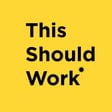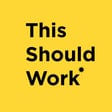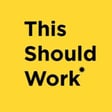
TSW* S1E1 - Jake Juracka of Northwestern University's Garage
In this episode, I'm thrilled to have Jake Juracka, the talented Senior Associate Director at The Garage at Northwestern University and my former student at DePaul. Jake has a rich background in fostering innovation and entrepreneurship, especially among young innovators. His journey from working on technical projects to shaping the future of student entrepreneurs at Northwestern is truly inspiring.
Jake’s role at The Garage involves mentoring students, organizing impactful events, and driving initiatives that cultivate a vibrant entrepreneurial ecosystem. In our conversation, we dive deep into his experiences, the challenges he’s faced, and the strategies he employs to guide budding entrepreneurs. We also explore the innovative programs at The Garage and how they are making a significant impact on the entrepreneurial landscape.
Whether you’re an aspiring entrepreneur, an educator, or simply interested in the world of innovation, this episode is packed with insights and practical advice. Join us as we explore the dynamic world of entrepreneurship with Jake Juracka.
Tune in to gain valuable perspectives and be inspired by Jake’s journey and his dedication to nurturing the next generation of innovators.


